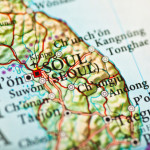
According to the Ministry of Gender Equality and Family, 76.1% of children whose foreign-born parents were from North America and Europe were learning their parent’s native language on top of Korean, while only 10.4% of those whose parents were from Cambodia and Vietnam were doing the same in 2012. One of the reasons behind the statistics has to do with the lack of support from the children’s Korean parents and relatives. According to NGOs, many foreign-born mothers are encouraged by their Korean spouses or in-laws to only speak in Korean with their children.
“Many Korean in-laws believe that when a child is exposed to two languages at a young age, he or she would end up not being fluent in either of those languages,” said a worker from Multicultural Children’s Library Modoo in Seoul, “but having a bilingual environment only betters a child’s linguistic development and cultural understanding.” The ministry will establish 20 more pre-school classes for multicultural children, up from the current 80 nationwide, and increase the number of Rainbow Schools, a special educational institution for young foreign-born children, to 17 from the current 12 across the nation.





